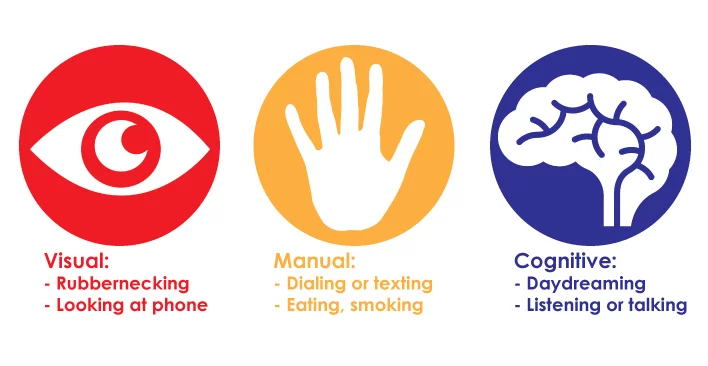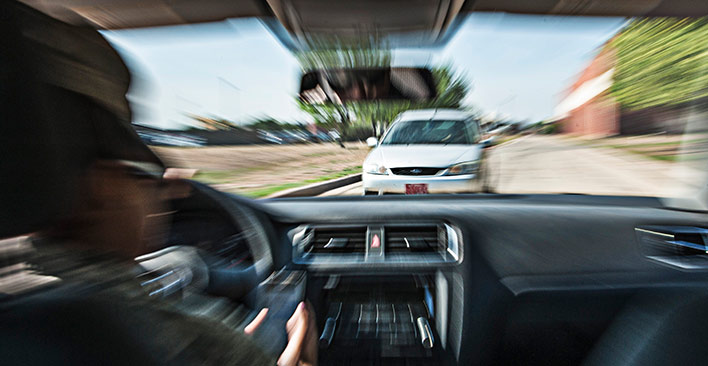Have You Been Hit by a Distracted Driver?
April is Distracted Driving Awareness Month. The personal injury attorneys at [torklaw] are offering information and advice to avoid distracted driving, in order to reduce the number of car accidents on our roads. If you’ve been injured in an accident with a distracted driver, we also offer a free, no obligation consultation. Talk to us to find out if you are entitled to significant compensation.
Distracted Driving Facts and Statistics
Here are some frightening statistics about distracted driving in the U.S.:
- Every year, distracted drivers are responsible for about 2.5 million car crashes
- It takes the brain 13 seconds to refocus after using a cell phone
- In the United States, about 9 people are killed every day due to car crashes that involved a distracted driver
- Over 1000 people are injured every day in crashes caused by distracted driving
- It takes only 3 seconds for a car crash to occur once the driver has been distracted
- Reaching for an object increases the chances of a car crash by about 8 times
- Every day, distracted driving crashes kill at least nine Americans, and injure 100.
- AAA Foundation for Traffic Safety found that distracted driving caused 58% of crashes involving teen drivers.
- It takes 5 seconds to send the average text message. In that time, at 55mph, you will cover the length of a football field — with your eyes off the road.

Cell Phone Crashes Are Under-reported
NHTSA estimated that 10% of fatal crashes and 15% of injury crashes were distraction-affected.
However, the National Safety Council (NSC) estimates that cell phone use caused at least 27% of motor vehicle crashes. Why the disparity?
Details on fatal crashes from police reports are entered in the NHTSA’s Fatality Analysis Reporting System (FARS).
NSC recently reviewed evidence for 180 fatal crashes that indicated a driver was using a cell phone. This included passenger reports, testimony of the caller or text recipient, and other investigation results. They found that only 50 percent of those crashes were coded in FARS as involving a cell phone.
Currently, there is no reliable method to accurately determine how many crashes involve cell phone use. Law enforcement officers must rely on drivers’ admissions or witness statements regarding cell phone use. Otherwise, it may not be apparent that cell phone use was an accident cause. When cell phone use is identified later in the investigation, the FARS report may not be updated.
Additionally, the methods used to report cell phone use related to accidents varies from state to state. So, even the frightening statistics we mentioned at the beginning of the post may represent only a fraction of the problem.
Top 10 Driving Distractions
A Pennsylvania-based insurance company examined data from the Fatality Analysis Reporting System, which surveys all American motor vehicle fatalities. Here are the top 10 causes of distracted driving:
- Generally distracted or “lost in thought” – 62%. By far the biggest cause of distracted driving fatalities is a driver’s mind wandering for long enough to lead to a collision—and someone’s death.
- Cellphone use – 12%. The second-leading cause of deaths due to distraction-related car accidents won’t be a surprise to anyone, as cellphones while driving (even the hands-free options) can distract us in a number of ways. But if they’re not the biggest cause then what is?
- Outside person, object or event – 7%. It turns out that looking at something or someone outside the car, like gawking at an accident or at people in other cars, is even more of a distraction than the person in the passenger seat.
- Other occupants – 5%. Other people in the car can place major demands on your attention when you’re driving, which can result in a collision.
- Using or reaching for a device brought into the car – 2%. We all know that using devices like cellphones can take our minds off the task of driving. But it turns out that even reaching for them can lead to a serious accident.
- Eating or drinking – 2%. Every car has cupholders—and using them can be a definite source of distraction.
- Adjusting audio or climate controls – 2%. Fiddling with the radio or adjusting the A/C for even a moment is a factor in a small number of traffic fatalities.
- Using devices/controls to operate the vehicle – 1%. Surprisingly, adjusting things like mirrors or seatbelts plays a relatively minor role in distraction-related car accidents.
- Moving objects – 1%. Moving objects in the car such as insects and pets can lead you to take your eyes off the road—and at least one source suggests that it may be an underreported cause of distraction.
- Smoking related– 1%. Only one in a hundred accidents is related to lighting a cigarette, smoking or putting it out.
Hands-Free Is NOT Risk-Free
There are three basic types of driving distractions: visual, manual, and cognitive:
- Visual distractions involve looking away from the road.
- Manual distractions cause us to remove our hands from the steering wheel.
- Cognitive distractions happen when our minds are not focused on the road, or the task of driving.

Many distractions involve a combination of these three types. But the number one accident cause, daydreaming, is an entirely cognitive distraction. Drivers don’t need to use their hands or look away from the road to be distracted.
80% of drivers mistakenly believe that using a hands-free device to talk on the phone while driving is safe. Nearly all distracted driving laws reinforce this misconception. Most state laws ban only handheld phones or texting while driving, but allow hands-free cell phone use.
The National Safety Council compiled more than 30 scientific studies comparing driver performance with handheld and hands-free phones. All studies showed that there is no safety benefit to using hands-free phones when driving. Hands-free devices do not remove the dangerous cognitive distraction.
Many people pride themselves on their “multitasking” skills. But the NSC reminds us that multitasking is a myth. Human brains do not perform two tasks simultaneously. Instead, the brain performs tasks in sequence, switching rapidly from one task to another.
It may feel like we’re doing two things at once. Actually, we are draining our brain’s resources by forcing it to constantly shift focus for extended periods.
This cognitive distraction keeps our brain from processing all the information it takes in. Our brains compensate by not sending all visual information to the working memory. Our field of vision narrows. We are looking out the windshield, but our brain only processes 50% of what we see.
“Multitasking is a myth. Our brains don’t perform tasks concurrently, but switch between tasks rapidly. To compensate, our field of vision narrows by 50%. Hands free is not risk free. Hang up and #JustDrive.”
The result of this “inattention blindness” is too often a serious or fatal collision with another vehicle or a pedestrian.

Safe Driving Practices
Between 1991 and 2017, the rate of drunk driving fatalities in the United States decreased by 46%. As people gained a greater awareness of the impact of driving under the influence, it became socially unacceptable. Americans can reduce distracted driving deaths, too.
NHTSA’s Distracted Driving Awareness Month campaign reminds us that texting is also illegal and costly: U Drive. U Text. U Pay.
Here are some guidelines to help stop driving while distracted:
- Turn off or silence your phone, and place it out of your reach before you start the motor.
- Set a positive example for young drivers and drivers-to be. Model responsible driving and talk about its importance.
- If you are a passenger in a car where the driver is using an electronic device, speak up. Offer to make the call, read the text or look up directions so they can focus on the road.
- Share your pledge not to drive distracted on social media.
To celebrate Distracted Driving Awareness Month, TORKLAW encourages you to help make distracted driving a thing of the past!
Until then, please keep us in mind if you are ever injured due to someone else’s distracted driving, TORKLAW has a successful track record of recovering impressive amounts of compensation for distracted driving accident victims. We can help you too.
Did you find this post informative? You may also want to check out the below content:
Distracted Driving – Accidents Involving Cell Phones





